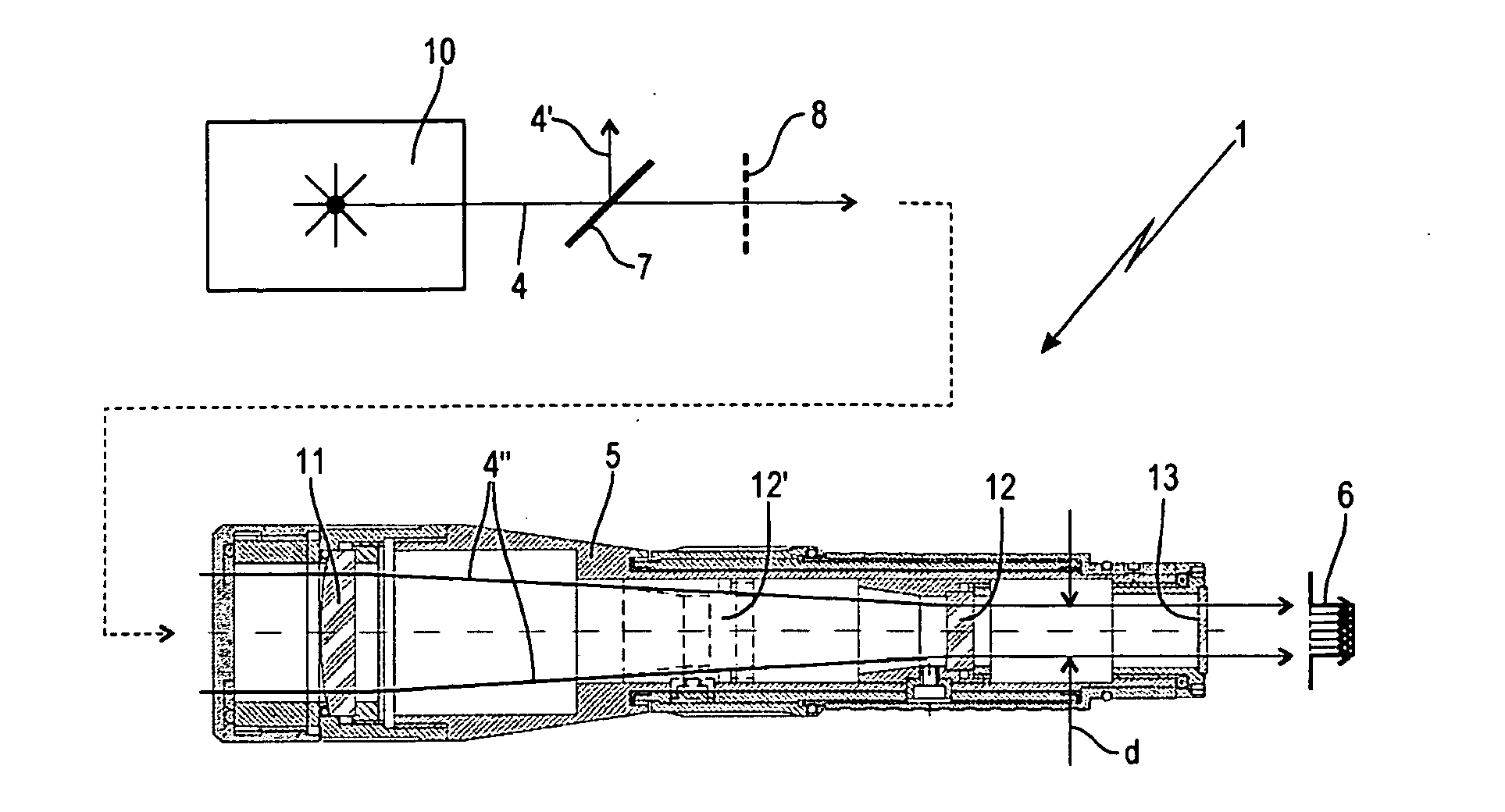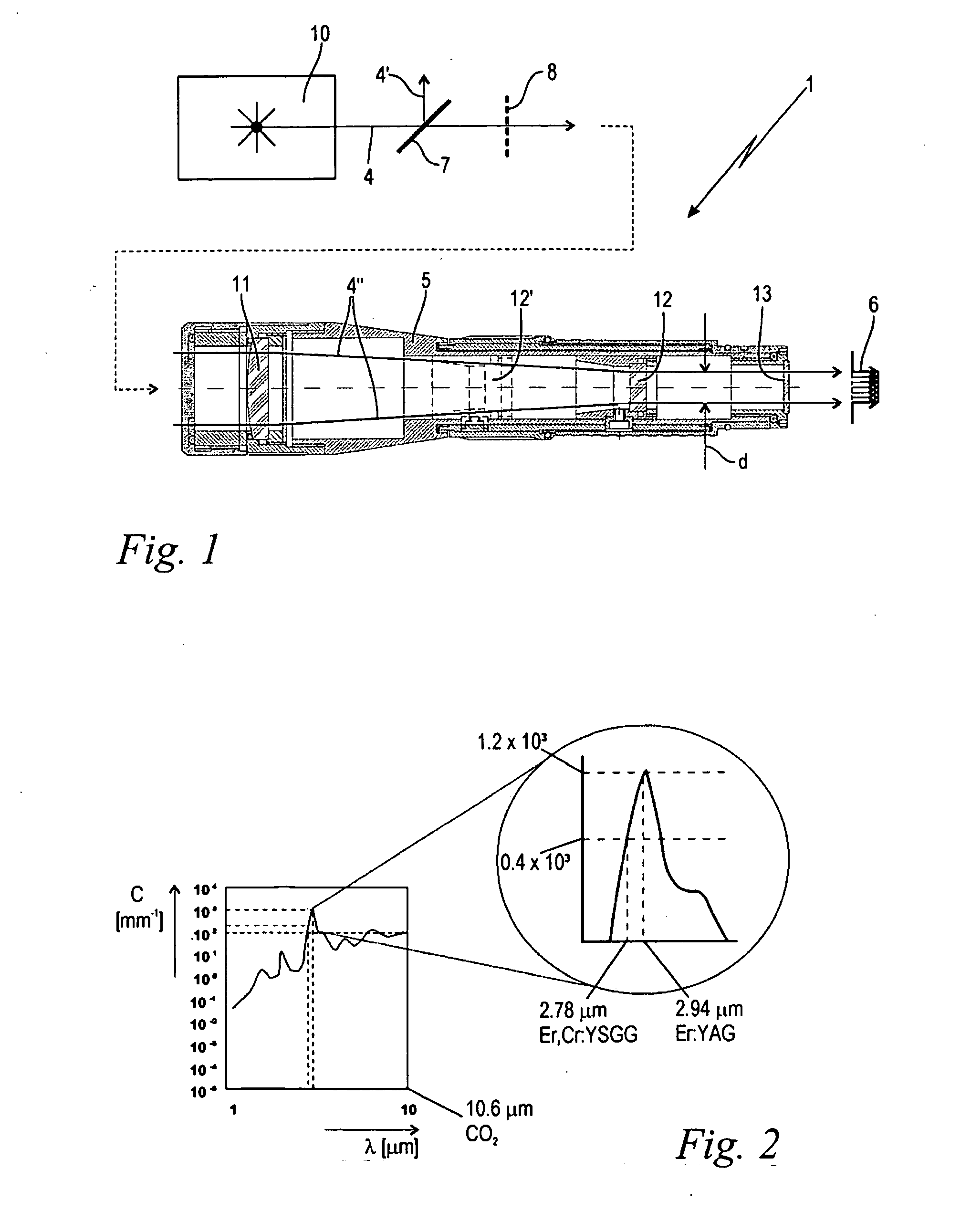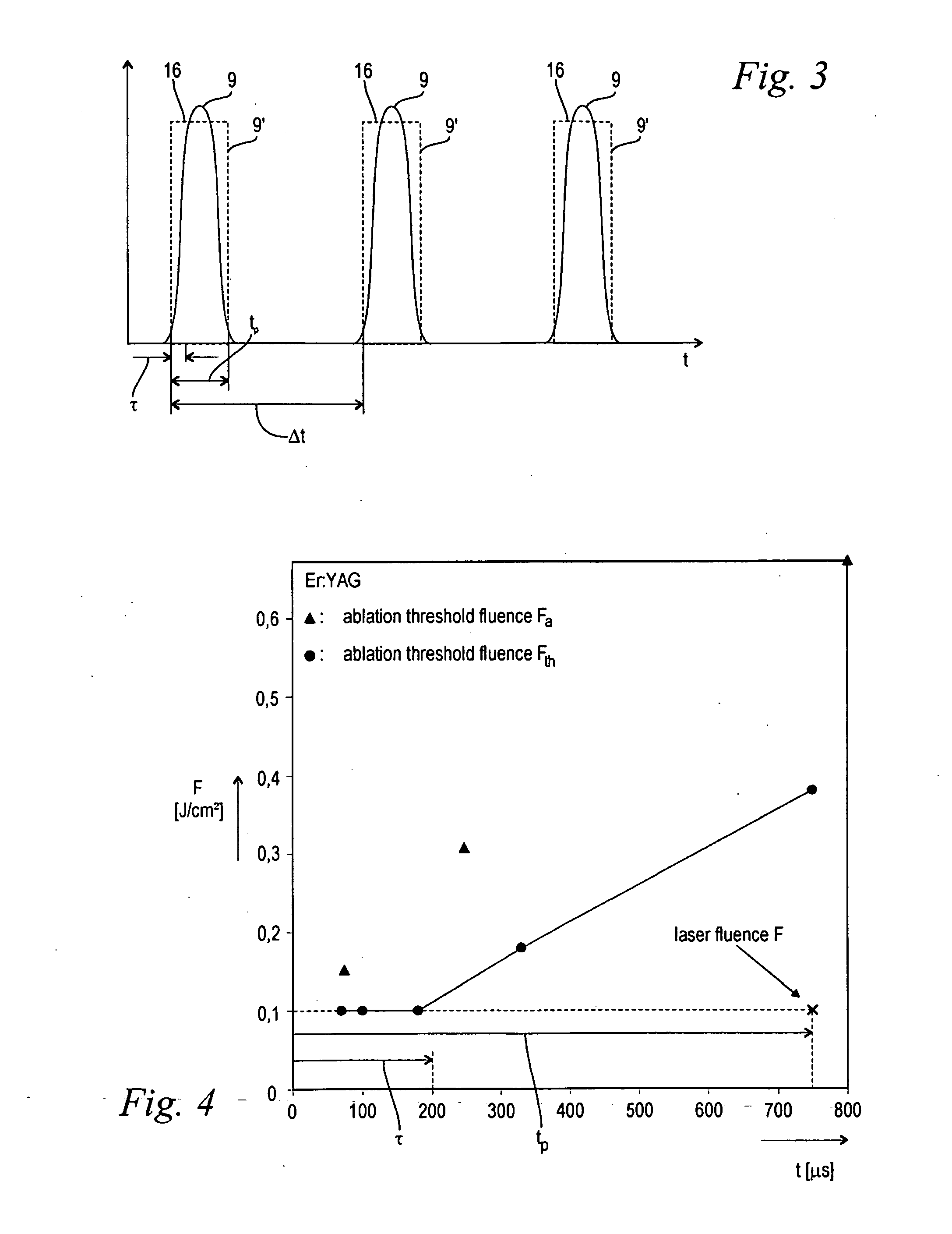Method for Operating a Laser System and Laser System for Bleaching Teeth
a laser system and laser technology, applied in dental tools, boring tools, radiation therapy, etc., can solve the problems of pain and irreversible damage, the inability to clean teeth colored by laser enhancing particles, and the disadvantages of existing laser light enhancing methods, so as to reduce the impact of laser energy on the bleaching agent, prevent instable operation, and uniform treatment intensity
- Summary
- Abstract
- Description
- Claims
- Application Information
AI Technical Summary
Benefits of technology
Problems solved by technology
Method used
Image
Examples
Embodiment Construction
[0044]FIG. 1 shows in a schematic, partially sectioned illustration a laser system 1 with a laser source 10 and a hand piece 5 for performing the method according to the invention. This method is a method for cosmetic bleaching of teeth 2 illustrated schematically in FIGS. 8 and 9 and a method for operating a laser system 1 for the cosmetic bleaching of teeth 2.
[0045]The laser source 10 generates a laser beam 4 that is guided by means (not illustrated), for example, an articulated arm or a fiber, to the hand piece 5 connected to the end. The hand piece 5 can be freely guided by the user to the treatment site wherein the laser beam 4 passes through the hand piece 5. The laser beam 4 passing through the hand piece 5 is limited by outer boundary rays 4″. The boundary rays 4″ illustrate that the laser beam 4 entering with a comparatively large diameter is collimated, i.e., is orientated in parallel. First, it passes through a plane-convex lens 11 that causes the diameter of the beam pas...
PUM
 Login to View More
Login to View More Abstract
Description
Claims
Application Information
 Login to View More
Login to View More - R&D
- Intellectual Property
- Life Sciences
- Materials
- Tech Scout
- Unparalleled Data Quality
- Higher Quality Content
- 60% Fewer Hallucinations
Browse by: Latest US Patents, China's latest patents, Technical Efficacy Thesaurus, Application Domain, Technology Topic, Popular Technical Reports.
© 2025 PatSnap. All rights reserved.Legal|Privacy policy|Modern Slavery Act Transparency Statement|Sitemap|About US| Contact US: help@patsnap.com



